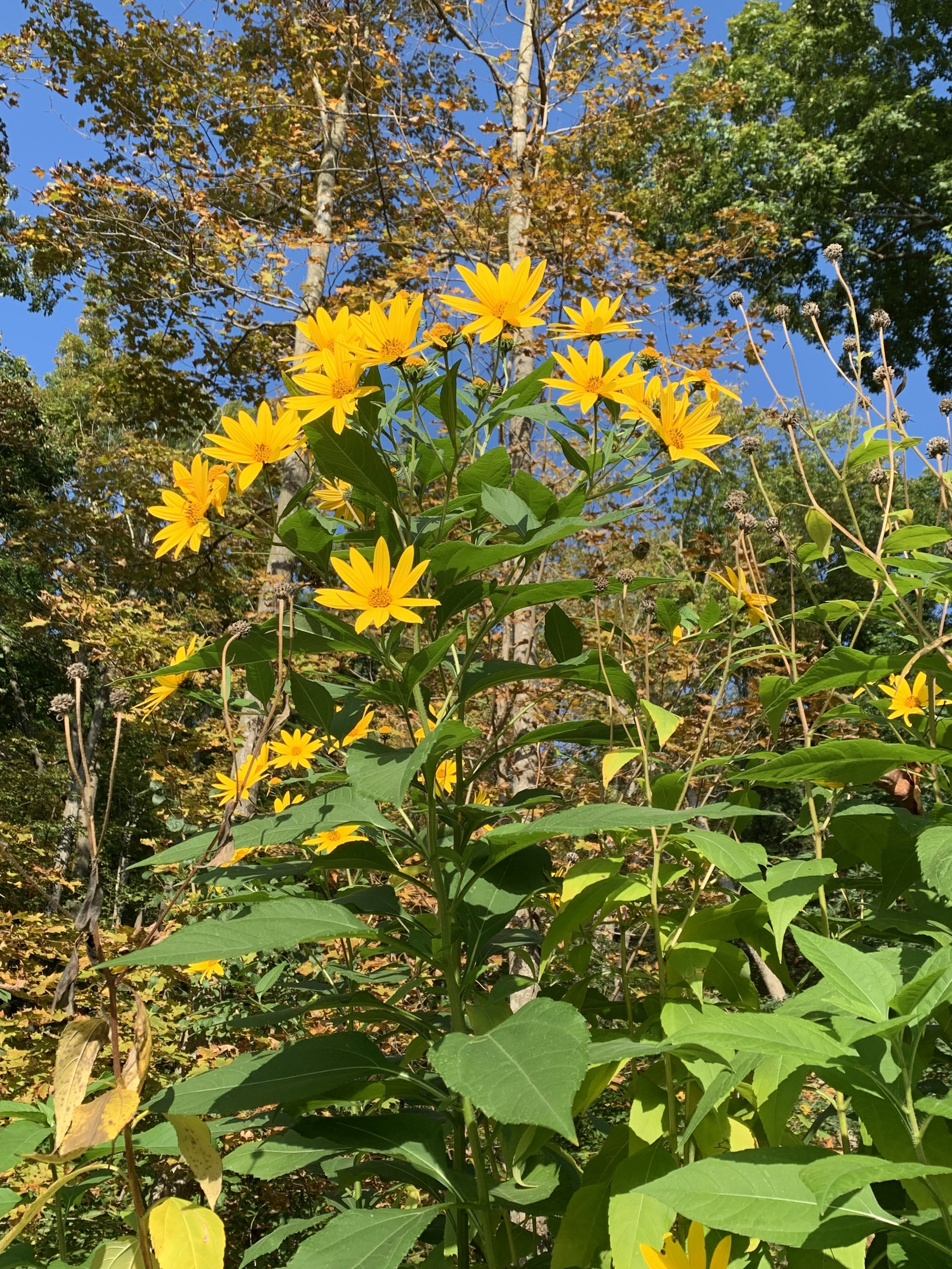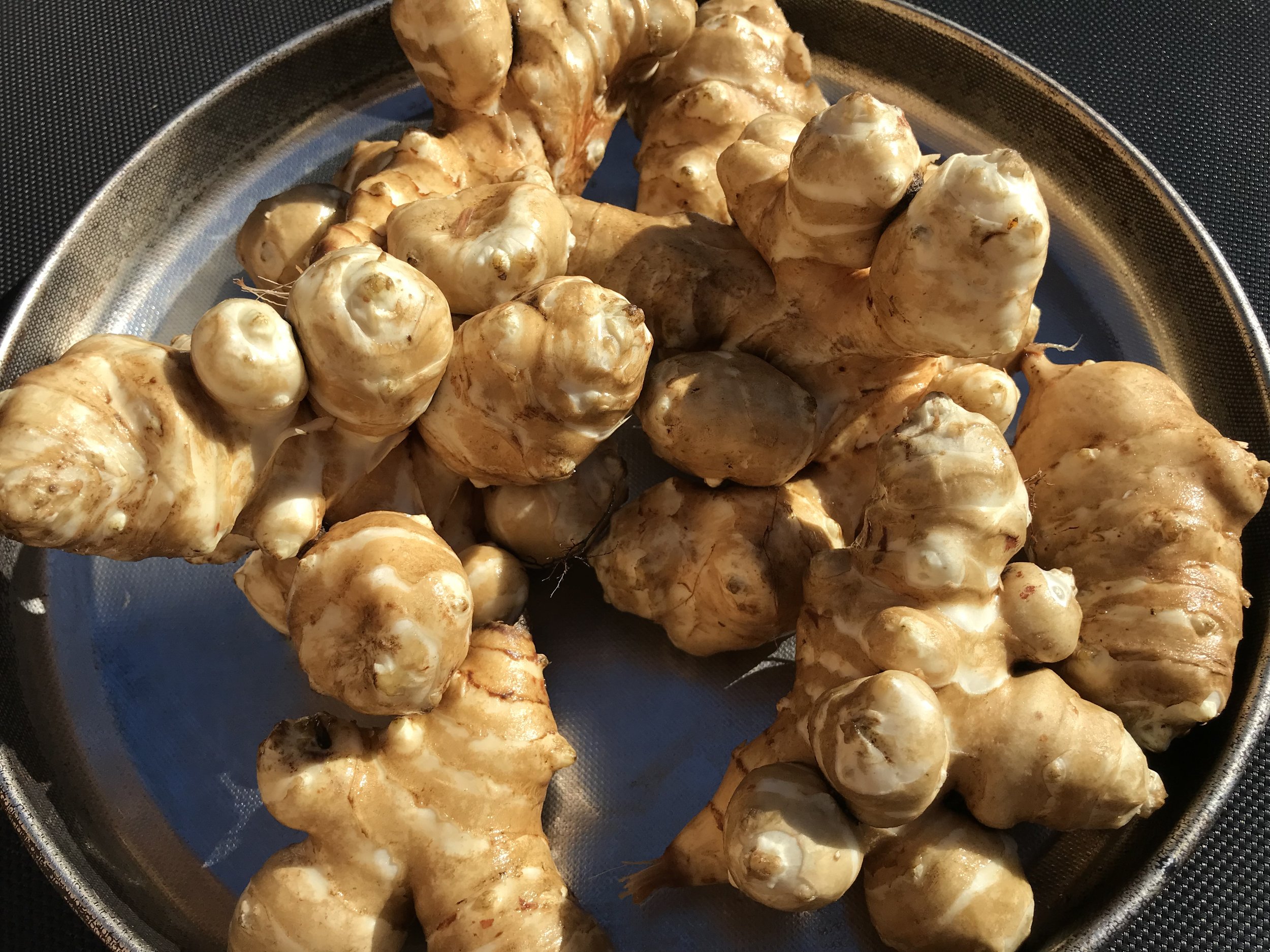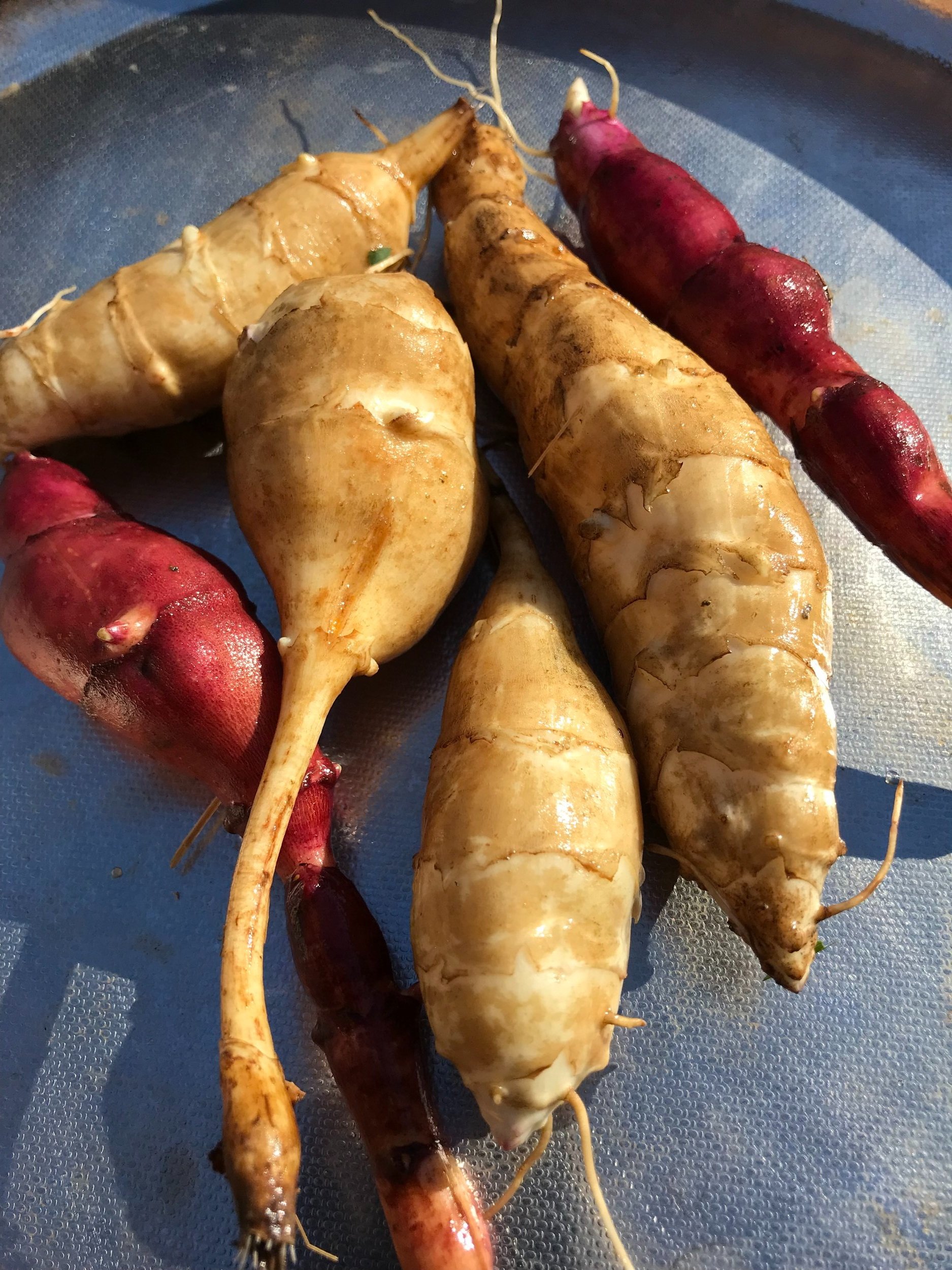 Image 1 of 5
Image 1 of 5

 Image 2 of 5
Image 2 of 5

 Image 3 of 5
Image 3 of 5

 Image 4 of 5
Image 4 of 5

 Image 5 of 5
Image 5 of 5






Sunchoke
4 or more tubers for propagation
Helianthus tuberosus
We like plants that are easy to grow, even ‘weedy.’ The sunchoke is a super productive plant above ground and below. Above ground it grows tall and creates an abundance of useful biomass. Below ground it produces sweet, nutty tubers rich in inulin, a dietary fiber that promotes gut health, but also causes flatulence in many people—hence the nickname ‘Fartichokes’. The plants will come back every year from tubers left in the ground after harvest. They can get browsed by deer repeatedly and still come back and flower. Sunchokes were a staple food for indigenous people of the Americas. We have experimented with many different preparations of sunchokes, including sunchoke syrup, ‘jerky’, flour, and loooonnnnggg cooking. We haven’t yet found a way to mitigate the flatulence factor brought about by the inulin in the tuber and find them difficult to eat without…consequences. I suspect if we made them a regular part of our diet our bodies would adjust, but for now we mostly use sunchokes for winter chicken feed. The chickens love them.
You will receive at least 4 tubers. Once you invest in a small number of sunchokes you shouldn't have to buy them again--they will multiply! We are offering a mix of named varieties including Big Bertha, Red Fuseau, Gigant, Red Rover, a Chinese selection and a dwarf variety, all selected for their large tubers or other favorable characteristics.
4 or more tubers for propagation
Helianthus tuberosus
We like plants that are easy to grow, even ‘weedy.’ The sunchoke is a super productive plant above ground and below. Above ground it grows tall and creates an abundance of useful biomass. Below ground it produces sweet, nutty tubers rich in inulin, a dietary fiber that promotes gut health, but also causes flatulence in many people—hence the nickname ‘Fartichokes’. The plants will come back every year from tubers left in the ground after harvest. They can get browsed by deer repeatedly and still come back and flower. Sunchokes were a staple food for indigenous people of the Americas. We have experimented with many different preparations of sunchokes, including sunchoke syrup, ‘jerky’, flour, and loooonnnnggg cooking. We haven’t yet found a way to mitigate the flatulence factor brought about by the inulin in the tuber and find them difficult to eat without…consequences. I suspect if we made them a regular part of our diet our bodies would adjust, but for now we mostly use sunchokes for winter chicken feed. The chickens love them.
You will receive at least 4 tubers. Once you invest in a small number of sunchokes you shouldn't have to buy them again--they will multiply! We are offering a mix of named varieties including Big Bertha, Red Fuseau, Gigant, Red Rover, a Chinese selection and a dwarf variety, all selected for their large tubers or other favorable characteristics.